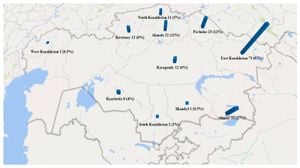The study presents new Bayesian methods for measuring agreement in nominal and ordinal data using Gower-type distances. This research aims to improve current methodologies for evaluating how much agreement exists among different coders, particularly important across disciplines where subjective categorization is common.
Developed by John Hughes, the study introduces two distinct approaches for assessing agreement using Gower-type distances, accompanied by Bayesian inference techniques for both one-way and two-way design studies. Previously established measures, like the kappa statistic, have potential shortcomings which this research seeks to address comprehensively.
The analysis was conducted on various datasets, including simulated examples and real-life applications such as radiological studies of congenital conditions and psychiatric diagnosis assessments. By employing these new techniques, researchers can gain more accurate insights about consensus among evaluators.
The research highlights how inter-coder or intra-coder agreement coefficients—like the discussed Gower-based measures—are pivotal for analyzing categorical data. Acknowledging the historical evolution of agreement measures, starting with the kappa statistic to more recent developments, the study lays out its methodology systematically.
Data was arranged and analyzed using suitable distance functions for both nominal and ordinal categories, demonstrating the effectiveness of proposed methods. Hughes assertively supports the significance of the goweragreement R package made publicly available for those interested in exploring these measures independently.
Critical findings show how Bayesian inference can significantly refine the process of measuring agreement. The research not only suggests the effectiveness of various distance metrics but also emphasizes how traditional measures may not adequately reflect actual agreement due to intrinsic biases.
Evaluations produced insights from simulated data; one-way designs demonstrated strong performance, whereas two-way designs challenged existing methodologies, necessitating this advanced approach. The findings report impressive, credible intervals indicating high agreement levels, particularly across datasets used for analysis.
Particularly noteworthy is the proposal of new agreement scales informed by Gaussian mutual information aimed to refine interpretations of inter-rater reliability. Hughes mentions, “Agreement scales remain a subject of debate, and so the following scale (or any agreement scale) should be applied with caution.”
Conclusively, the study underlines pathways for future exploration related to Gower agreement by advocating for adoption across multiple data frameworks, asserting the need for constant methodological advancements to keep pace with data analysis demands.



